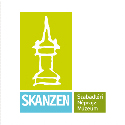Sóstó Museum Village
Sóstó Museum Village – Jósa András Museum: THE SOUL OF THE HOUSE: THE KITCHEN
The pilot project focused on the topic of gastronomy, which is intertwined with many segments of everyday life and holidays, as well as national culture, providing participants with the opportunity to engage in dialogue and experience the communal experience of cooking and eating. The implementing institution is an open-air ethnographic museum located near the Ukrainian–Hungarian border.
Target groups: the 30-50 Ukrainian participants in the events represented two groups: people coming from more distant areas of Ukraine affected by direct fighting, and those arriving from the bilingual region of Transcarpathia near the border. The implementation of the project and reaching the target audience was helped by the staff of the Szabolcs-Szatmár-Bereg County Ukrainian Nationality Local Government.
The four cooking workshops, which took place from February to May, were related to the themes of carnival, fasting, Easter and bread baking. The individual events were complemented by informative lectures in Ukrainian and Hungarian, and the connection to the museum's buildings and artifacts also enriched the cross-border program. At the events, the participants could learn about several traditions in practice, such as carnival noise-making or the ritual consecration of Easter dishes. Creative activities (e.g. bagpipe making, egg decorating) and other folklore programmes (e.g. storytelling, theater performances) enriched the multi-hour programmes. The events also provided ample opportunities to explore Ukrainian-Hungarian cultural parallels by involving changing locations within the museum territory, which supported the intercultural dialogue and the local integration of the target group. For the participants, presenting typical home-cooked meals had a role in strengthening identity and raising awareness of national values.
The programmes prepared outstanding elements of the Ukrainian gastronomic heritage: the meat, fasting (mushroom) and green (sorrel-egg) versions of borscht soup; Ukrainian stuffed cabbage and potato cabbage versions; varenyki filled with potatoes; and several ritual bread and cake varieties (pastry, caraway, proscura). Meanwhile, the participants could also taste dishes that play a prominent role in the local dietary culture of the Ukrainian refugees from Transcarpathia, including carnival donuts, pancakes, cabbage soup, Easter butter lamb and potato paljuski. At the closing ceremony of the project, the text of the Ukrainian-language audio guide was presented to the participants, so they could learn about the exhibitions of the museum village in their native language.
Within the framework of the project method, participants regardless of age could take part in the cooking workshops in an interactive way, and they could acquire new knowledge through practical experiences. During the joint cooking, a dialogue between generations was also established: the experienced helped the less practiced, introducing them to their own techniques. An important element of the project, in addition to gastronomy, is the dissemination of knowledge, the introduction of traditions, the involvement of creative activities and folklore elements, all of which help to raise awareness of cultural heritage by a broader perspective.
Adaptation:
The project can easily be adapted for museums with other types of collections as well as other cultural institutions, as the topic of gastronomy and traditions provides an opportunity for a wide range of connections. The pilot project is recommended for all ages, and it provides a great opportunity for intergenerational cooperation and for introducing different tastes to each other.
Feedback of the participants:
The project participants gave positive feedback to the satisfaction questionnaire regarding whether the project had increased their knowledge about Ukrainian intangible cultural heritage elements:
“I learned about Ukrainian carnival customs.”
“I learned new Ukrainian songs.”
“I learned about the process of making Easter bread, I had never heard of borscht soup before.”





